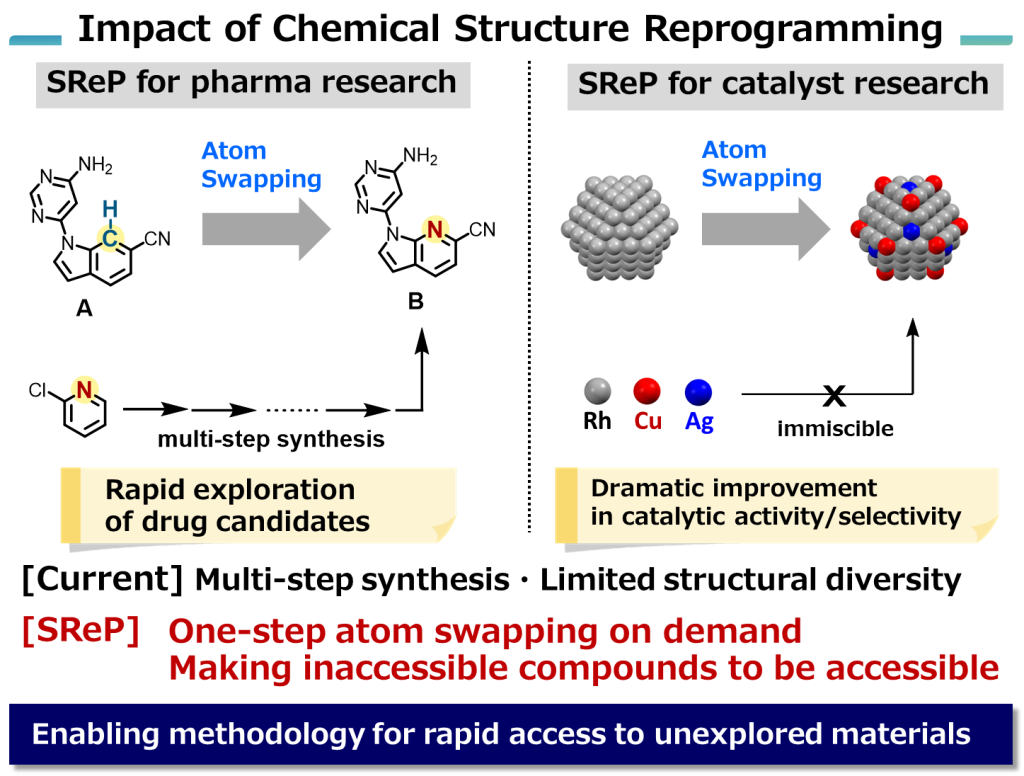Our Research
Goal of Our Research
In the evolving landscape of future societies, materials must not only offer advanced functionalities but also prioritize environmental sustainability and recyclability. As materials grow increasingly intricate to meet these demands, the lack of efficient methods for their rapid synthesis remains a significant challenge hindering material innovation.
Our research introduces Structural Re-Programming (SReP) as a groundbreaking approach to address this bottleneck. SReP offers a versatile methodology to modify skeletal structures on demand, enabling swift construction of diverse structural frameworks. In the traditional synthesis, even a minor editing to molecular skeleton often requires repeated reactions from starting materials (LEGO-like synthesis). In contrast, SReP streamlines this multi-step process by allowing substitutions, insertions, or deletions of atom(s) within the established structure. Furthermore, SReP can grant access to structures that are currently inaccessible.
While current chemical synthesis faces inefficiencies, particularly in editing skeletal structures, our interdisciplinary approach aims to bridge gaps across organic chemistry, inorganic chemistry, polymer chemistry, coordination chemistry, supramolecular chemistry, and biomolecular chemistry. By synergizing these fields under the umbrella of ‘science of synthesis,’ we seek to advance and refine the SReP methodology through collaborative exploration and innovation.

What Benefits Does SReP Offer?
In drug discovery, sometimes we need to swap atoms (for example, from compound A to compound B, see Figure below). But usually, this requires many steps of reactions from the beginning. If we could do this conversion in just one step, we could optimize structures very efficiently or even find new drug candidates. Once SReP for inorganic materials is established, we will be able to make a wide variety of inorganic substances that were previously hard to make. This includes things like metal nanoparticles, clusters, and bulk inorganic materials. This, in turn, will help us create catalysts that work even better and have more specific abilities. By developing basic technologies for breaking all types of chemical bonds and arranging atoms precisely, SReP is expected to change how we make things in two big ways: we will be able to quickly make lots of different chemical structures, and we’ll be able to make materials that we could not make before using traditional methods.




